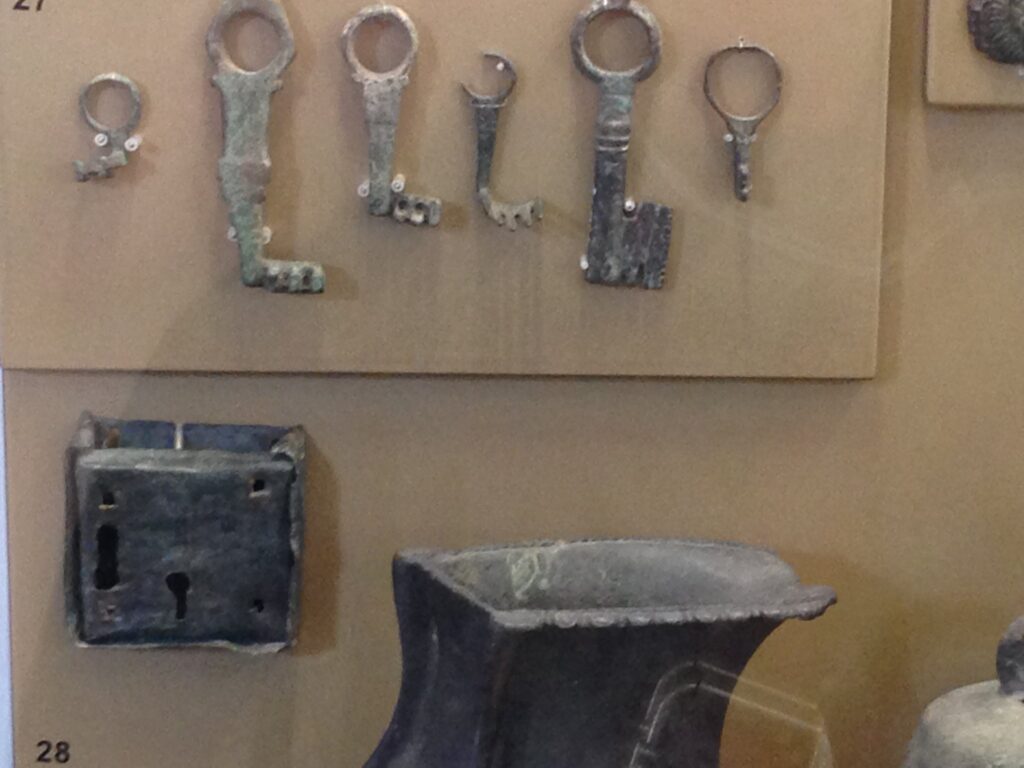In history, the Roman Empire shines as a beacon of innovation and architectural brilliance. Yet, amidst the renowned marvels of aqueducts, colosseums, and sprawling roads, the locks of the Roman era are lesser known gems. These Roman locks held a pivotal role in safeguarding possessions and managing access across the vast empire.

Origin of Roman Locks
The origin of Roman locks extend back to ancient civilizations of Greece and Egypt, where rudimentary locking methods were utilized. Romans improved and popularized these security devices, making them a part of their daily lives and structures. The necessity for security and order in such a vast and diverse society spurred advancements in lock craftsmanship and design.
Types of Roman Locks
- Warded Locks: Among the prevalent locks of the Roman era were warded locks. These locks featured internal barriers or wards within the lock casing, necessitating a specifically crafted key for navigation. The distinct shape of the key allowed it to bypass the wards, granting access to the lock.
- Pin Tumbler Locks: Another common type of lock during the Roman era resembled the pin tumbler locks used by ancient Egyptians. These locks utilized pins of varying lengths within the cylinder, requiring a corresponding key to lift them to precise heights and align them to unlock the mechanism.
Importance of Roman Locks
Roman locks transcended mere functionality, serving as symbols of status, power, and wealth. They found use in a variety of settings, from private residences to temples and treasuries, safeguarding valuable possessions and documents. Additionally, locks contributed to social hierarchies, with more intricate and secure models reserved for the privileged elite.
Furthermore, Roman locks played a crucial role in shaping security practices and access regulation. They provided a means of controlling entry and exit, effectively warding off theft, espionage, and unauthorized intrusion. Their presence brought a sense of order and stability to a society marked by constant expansion and change.
Legacy and Influence
Though the grandeur of the Roman Empire may have faded, the legacy of its locks endures. The fundamental principles and designs of Roman-era locks laid the groundwork for future innovations in lock technology. Concepts such as internal wards, pin tumblers, and unique key shapes continue to influence modern lock design and engineering, underscoring the enduring impact of ancient ingenuity.
In summary, the locks of the Roman era not only addressed security needs but also reflected the creativity and craftsmanship of their time. From modest warded locks to intricate pin tumbler mechanisms, these ancient devices played a vital role in shaping the social, cultural, and architectural landscape of the Roman Empire. As we unlock the mysteries of the past, we gain valuable insights into the complexities of Roman society and their unwavering pursuit of security and order.